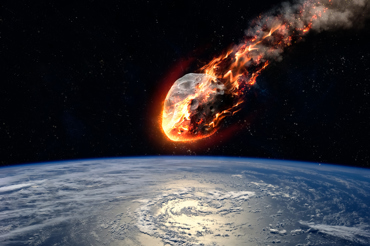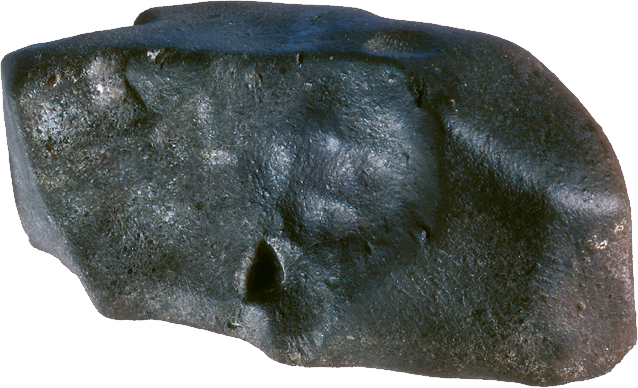Our Heritage Timeline
Strathmore Meteorite

Article Details
- Date:
- 1917 - Strathmore Meteorite
Categories
Strathmore Meteorite
The falling stars of East Perthshire
A rare phenomenon, which hit the headlines, happened in the Blairgowrie area around noon on Monday 3rd December, 1917. The scientific and historic significance of this event cannot be overstated. The fall of a meteorite, which came to be known as The Strathmore Meteorite was witnessed by many people around an incredibly wide area, from as far south as Hexham, County Durham, to Aboyne, Aberdeenshire, in the north.
Although it was a bright December day with brilliant sunshine, the brightness of the meteorite was said to be extraordinary and it was described as “ a scintillating incandescent mass.” Not only was it seen, but it was also heard. The noise was described as a huge crash followed by a succession of minor explosions, and then by a rushing sound as of a missile travelling through the air.
 The Strathmore Meteorite
The Strathmore Meteorite
Image Courtesy of Perth Museum and Art Gallery, Perth and Kinross Council
What is a meteorite?
It is a solid piece of debris that has travelled from outer space, surviving its journey through the atmosphere to land on Earth. Whilst still outside of the Earth's atmosphere, these debris bodies are known as METEOROIDS or ASTEROIDS. As they fall through the atmosphere and form fireballs they become METEORS or “falling stars”.
Most meteors burn up in the atmosphere, however those that make it all the way to the ground become known as METEORITES.
The Strathmore Meteorite was the largest ever recorded in Scotland, and experts from the Department of Geology at the National Museum of Scotland found that the Strathmore Meteorite contained both metallic and mineral elements.
Four fragments were recovered, and these have become known by the names of the farms or properties in which they landed:
CORSTON Found at South Corston Farm 3 km south-east of Coupar Angus and weighing 2lb 5oz (1.05kg) it fell on the lawn about 50m from the farm house.
KEITHICK Of the four fragments this one, weighing 2lb 8oz (1.16kg) became the most famous due to the fact that it fell through the roof of Mr and Mrs Hill’s house at South Lodge on Keithick Estate, about 2.5 km south-west of Coupar Angus. By the time a photographer arrived, the roof had been repaired, and a hole had to be added to the negative to show where the meteorite had landed.
CARSIE Mrs Grace Welsh of Carsie Farm about 4km south of Blairgowrie actually witnessed the 2lb 4oz (1.02kg) fragment hit the ground a mere 30yds (27m) from where she was standing.
EASTER ESSENDY This was the largest fragment weighing 22lb 8oz (10.2kg). Workers on the farm recalled hearing a heavy thud and noticing a flock of sheep scattering.
To mark the 100th anniversary of the fall of the Strathmore Meteorite, Perth and Kinross Museum and Art Gallery staged an exhibition with all four fragments on show.
This exhibition may be seen on the National Museum of Scotland's YouTube video
Find out more on the National Museum of Scotland website here.
Previous Page
